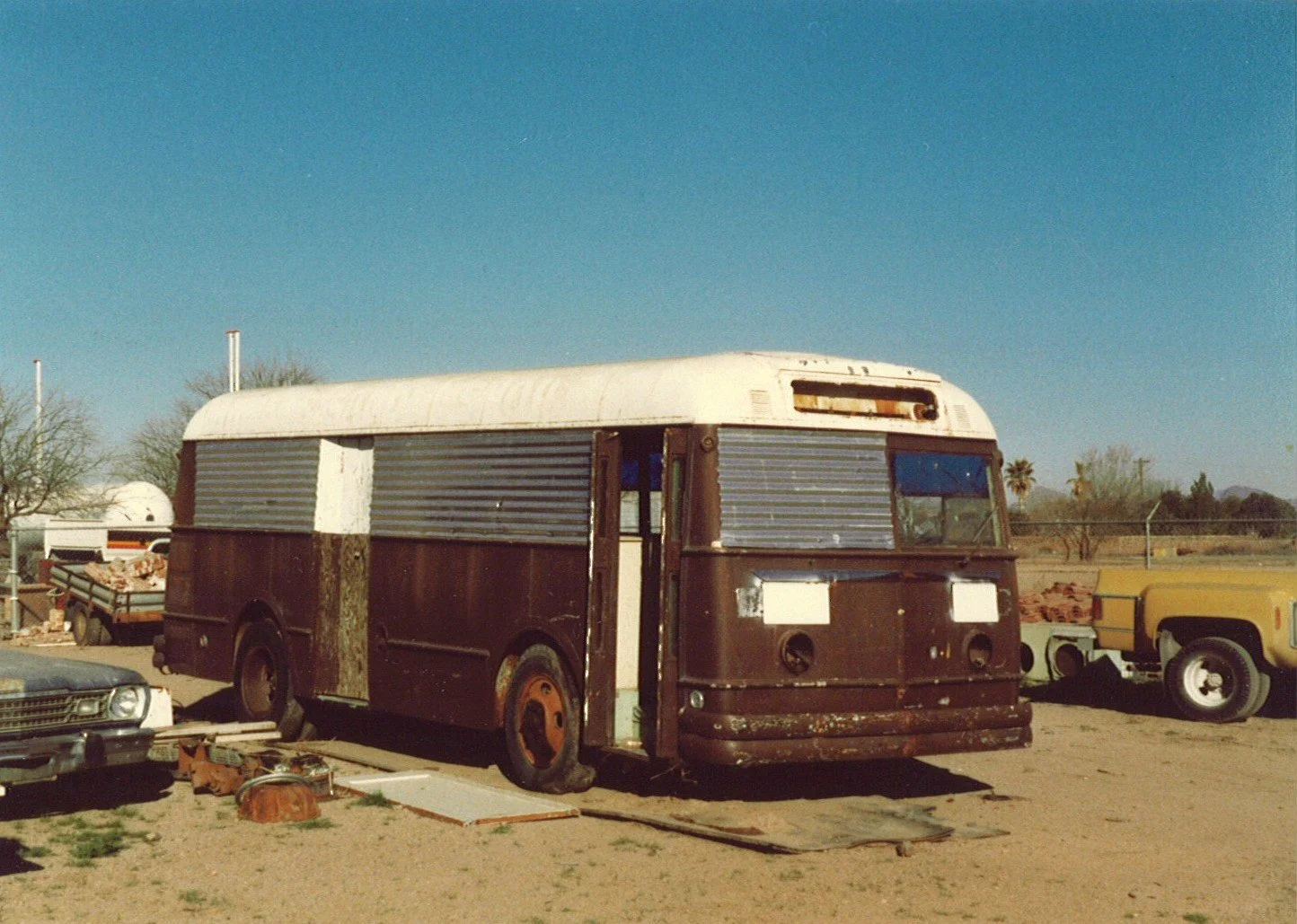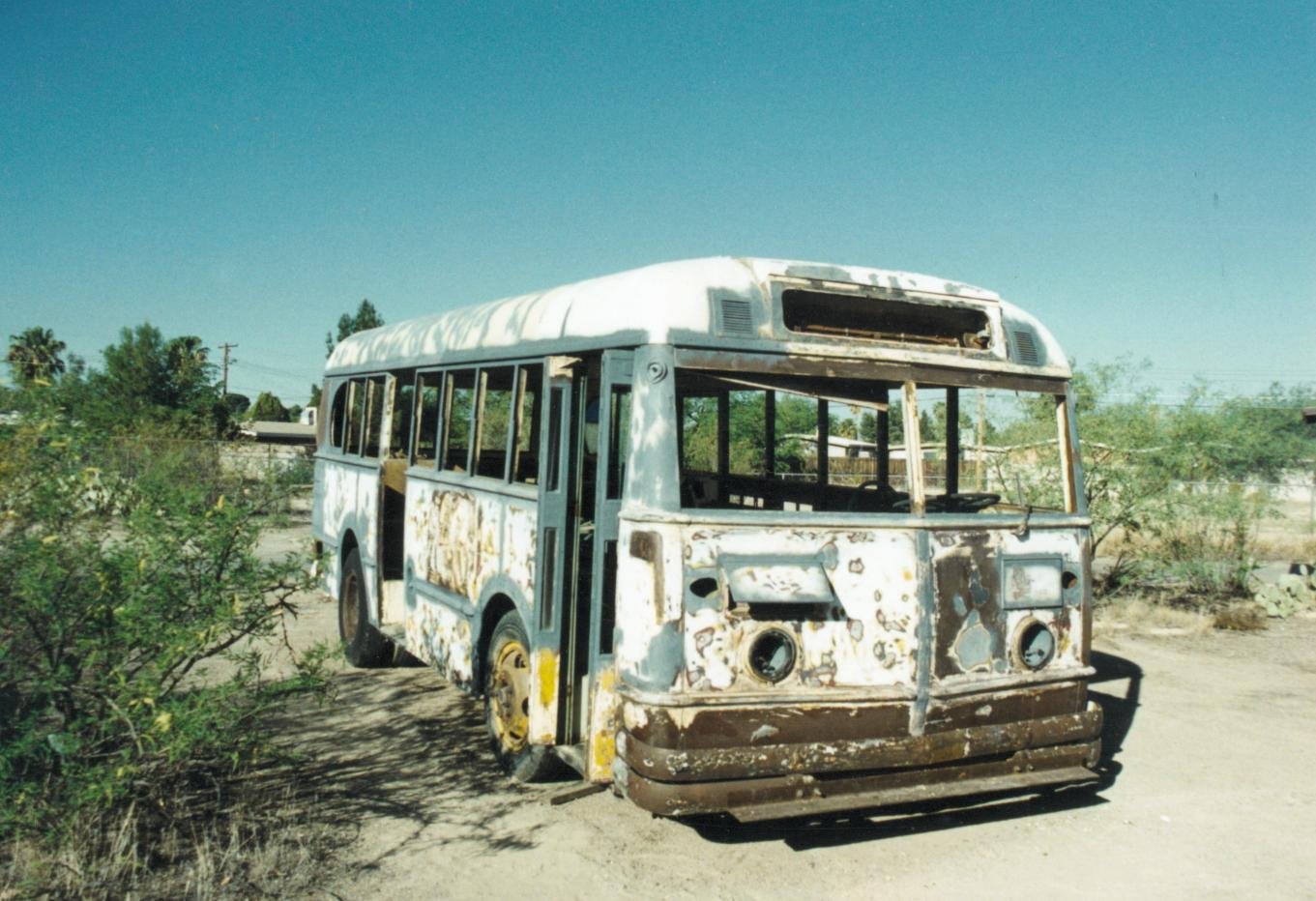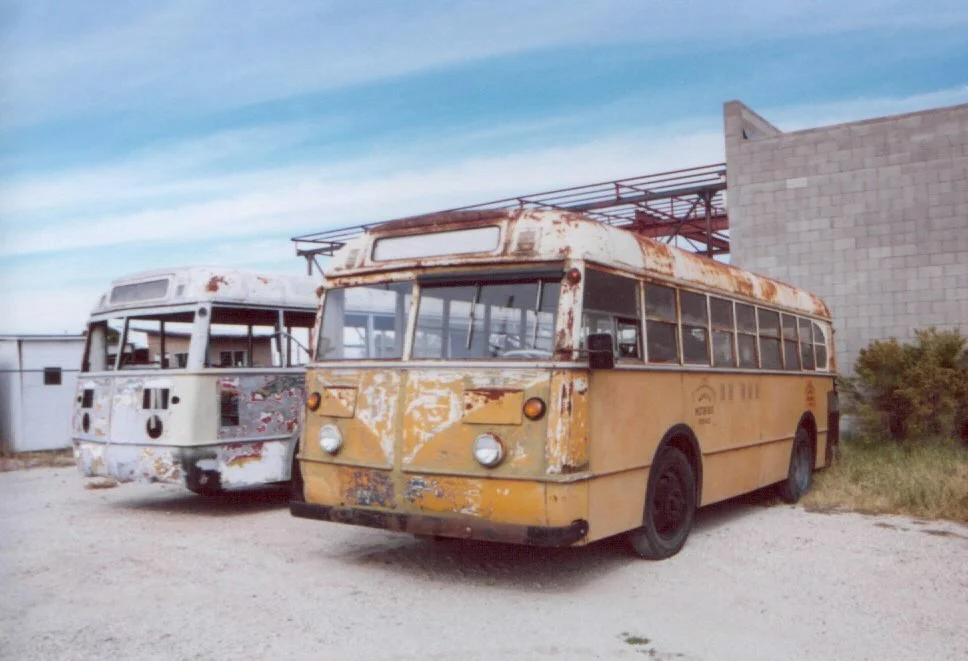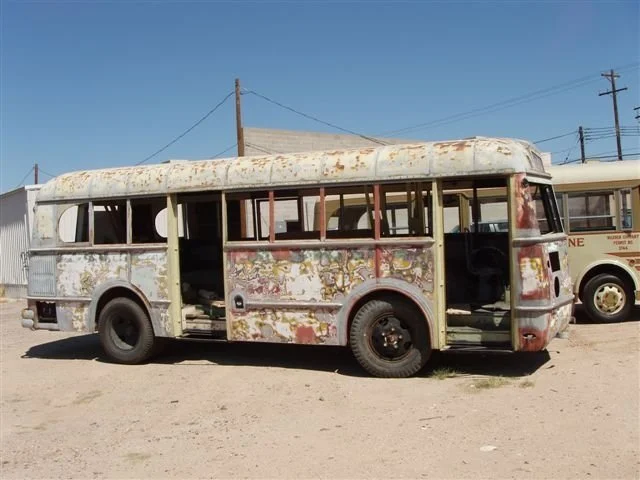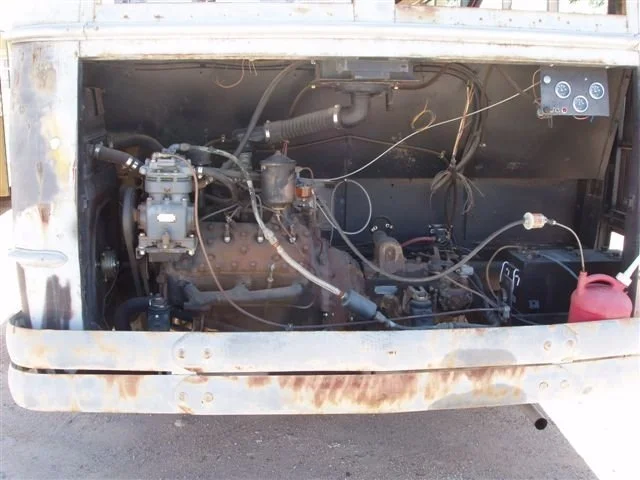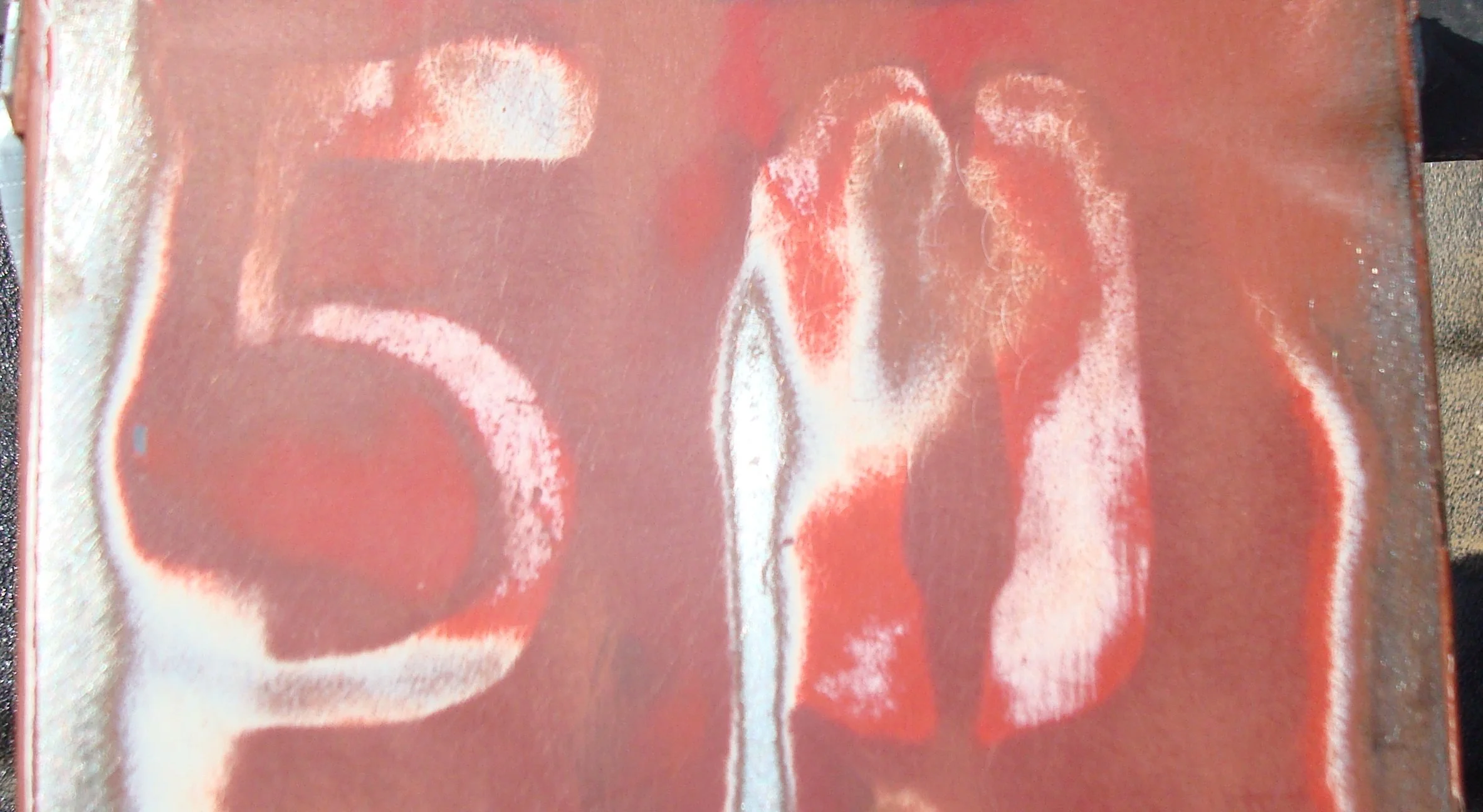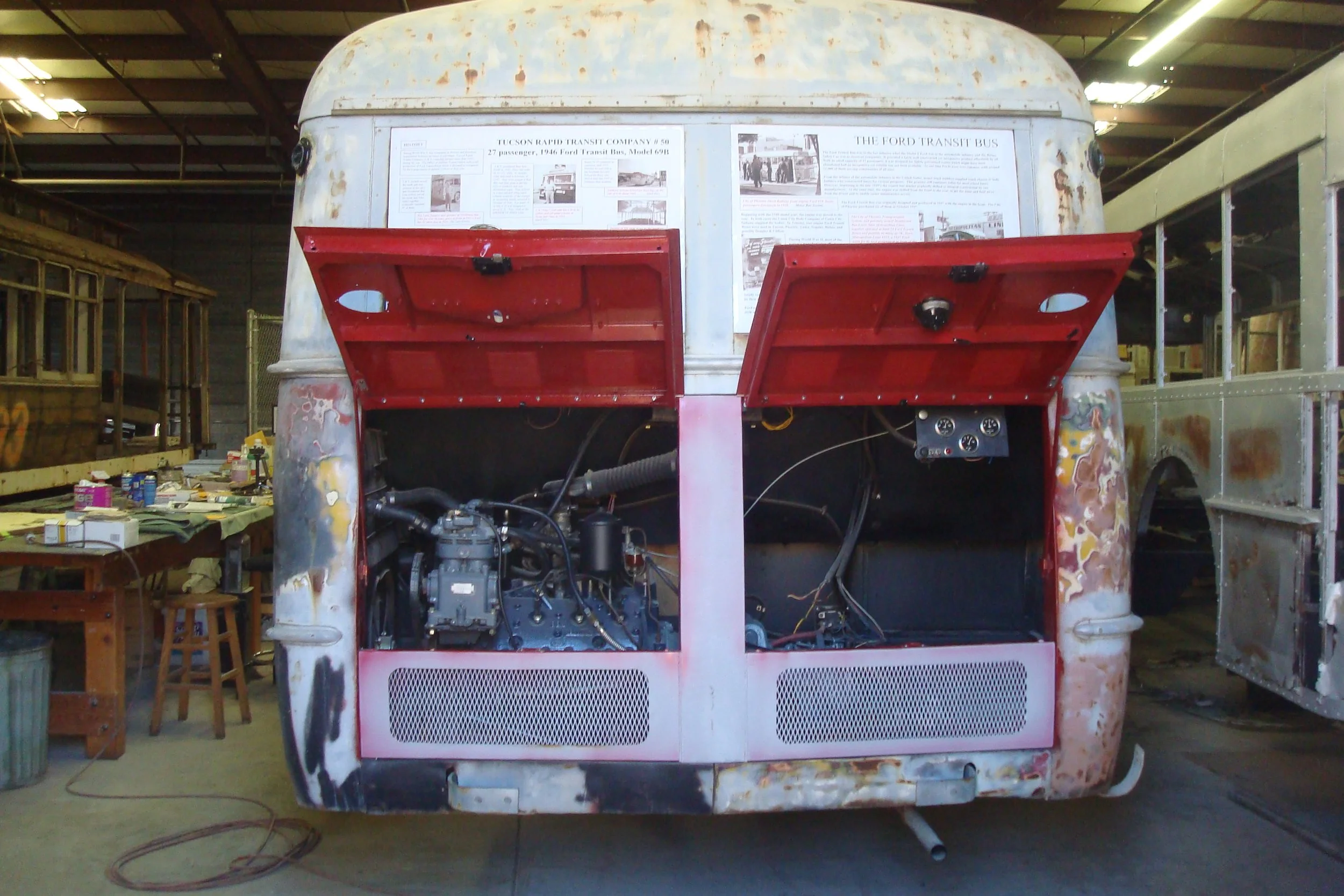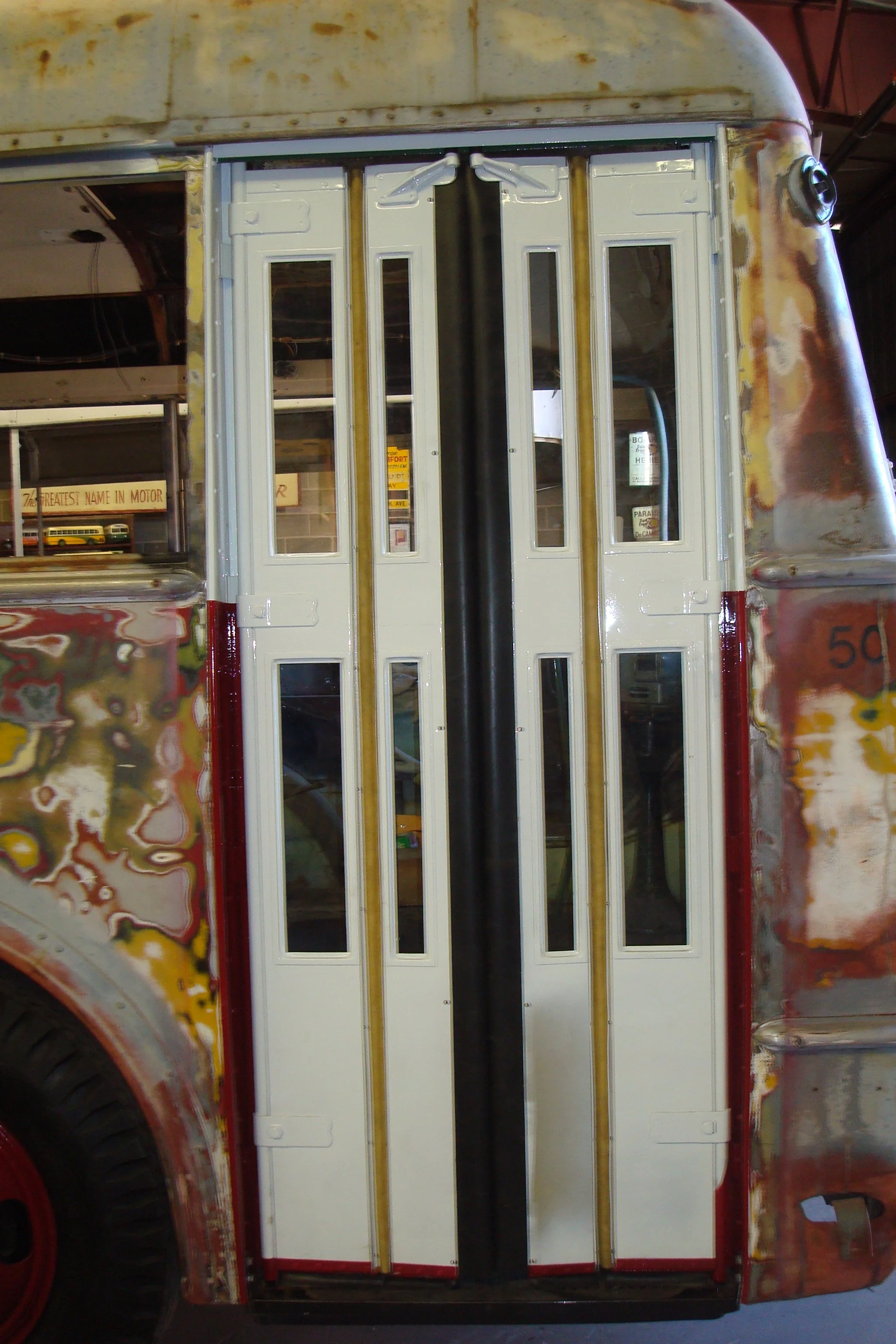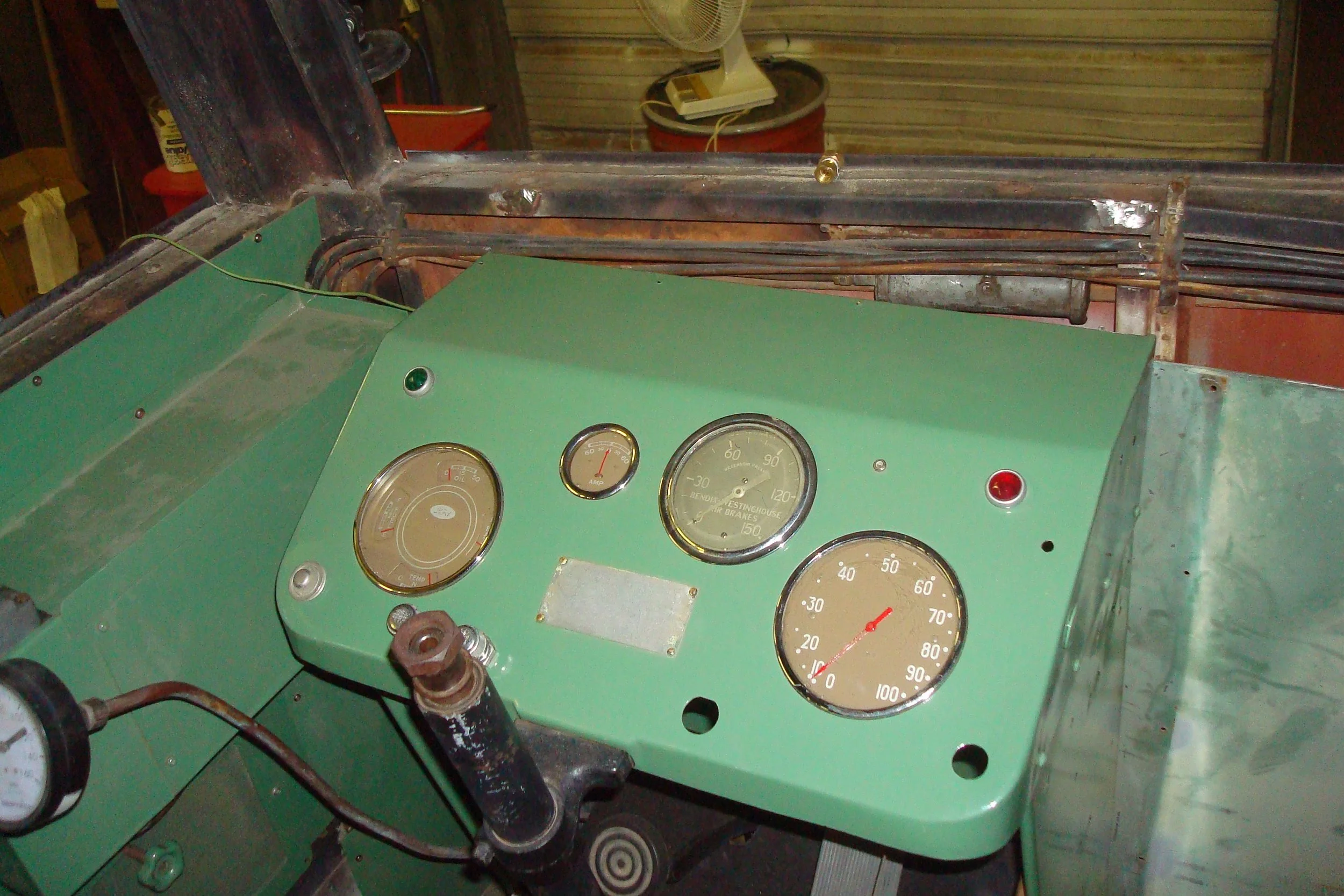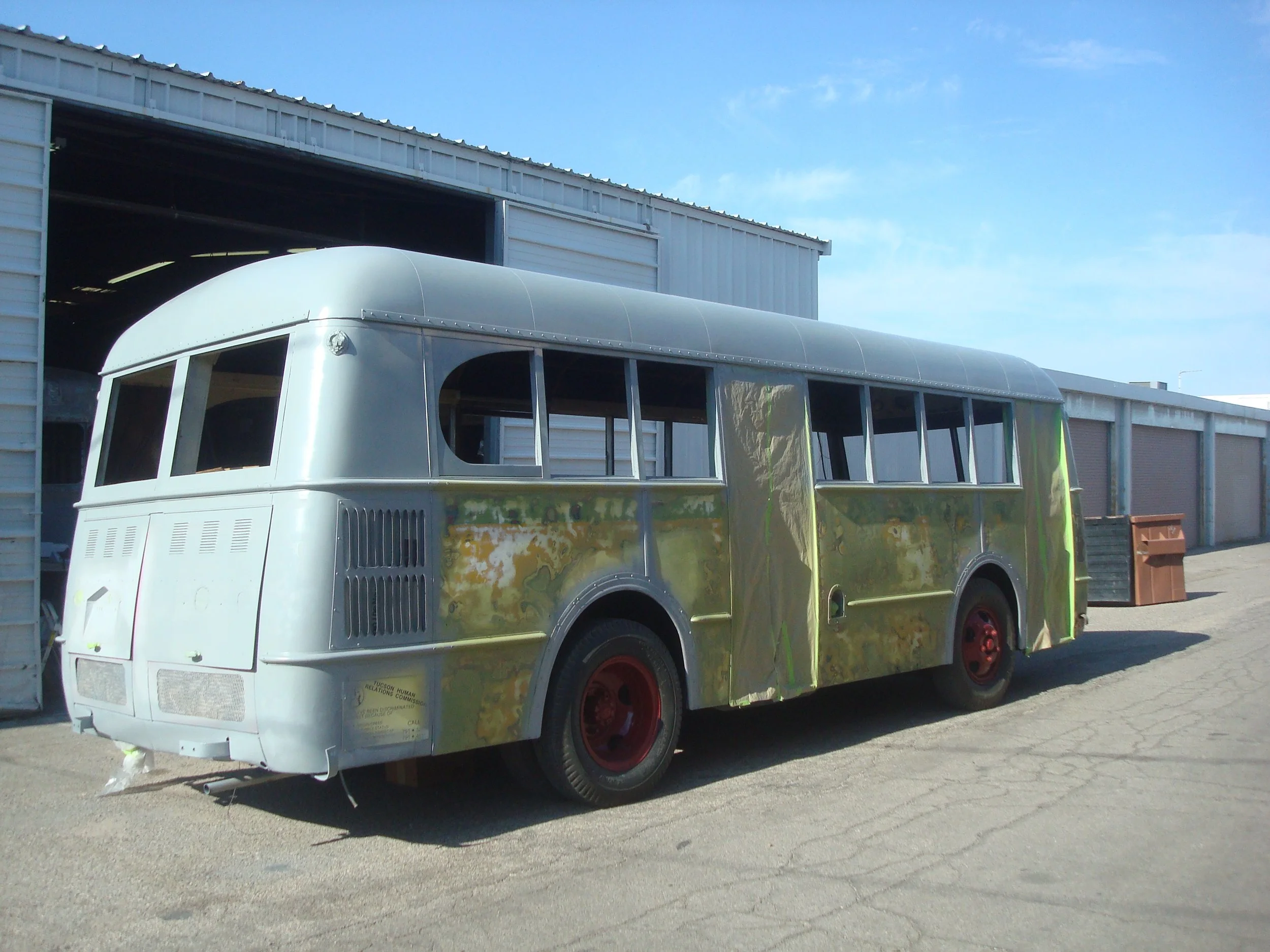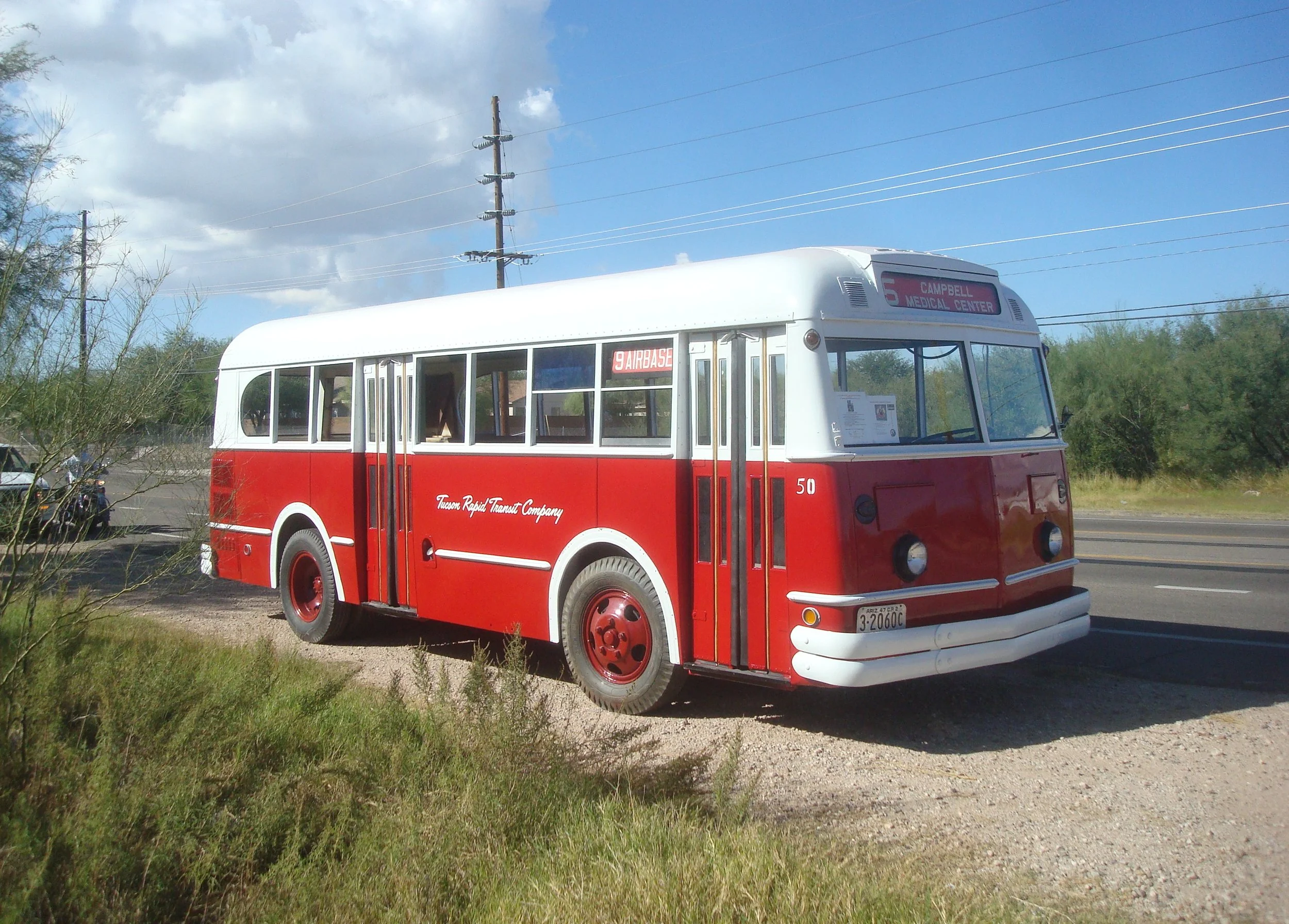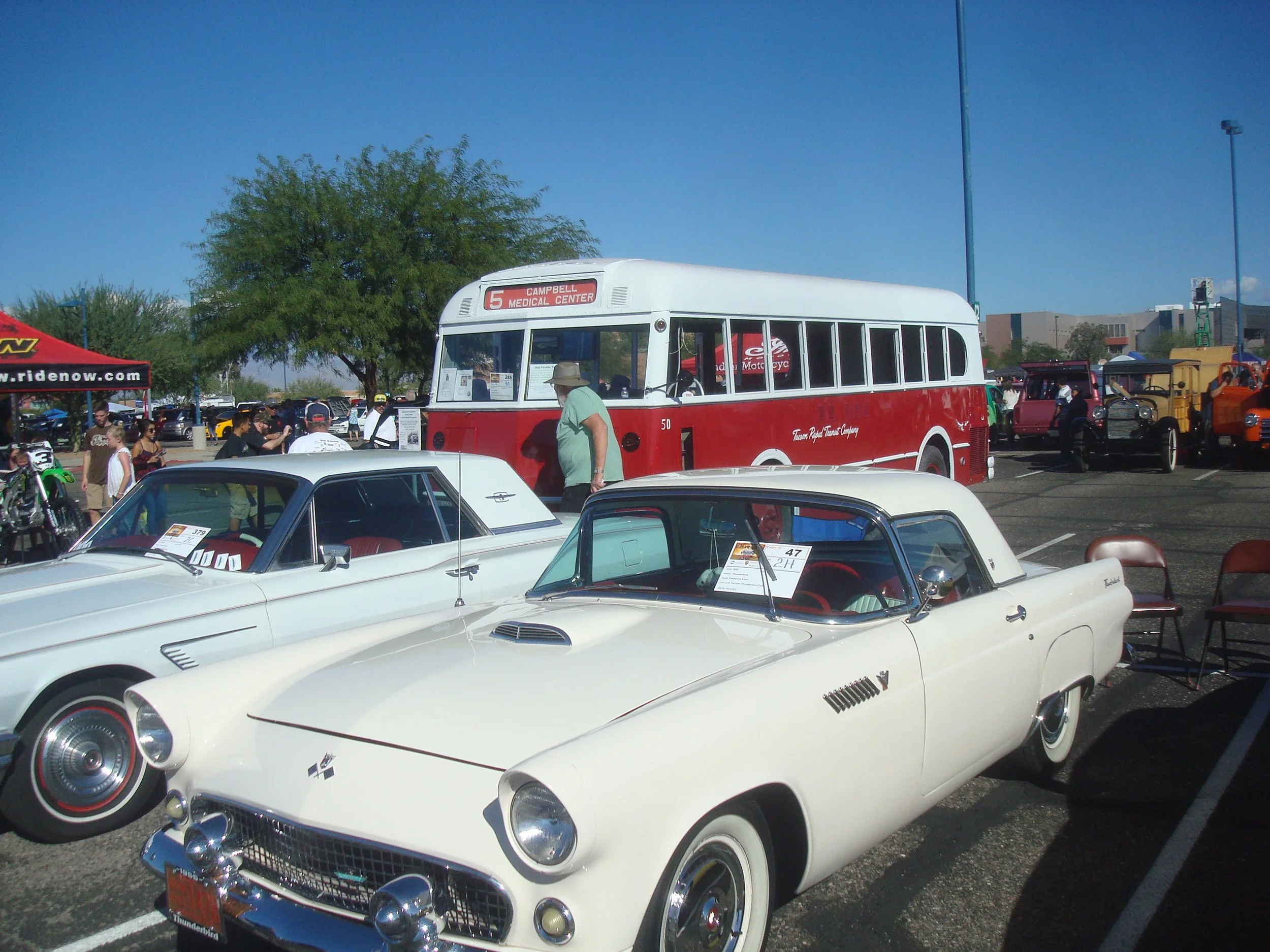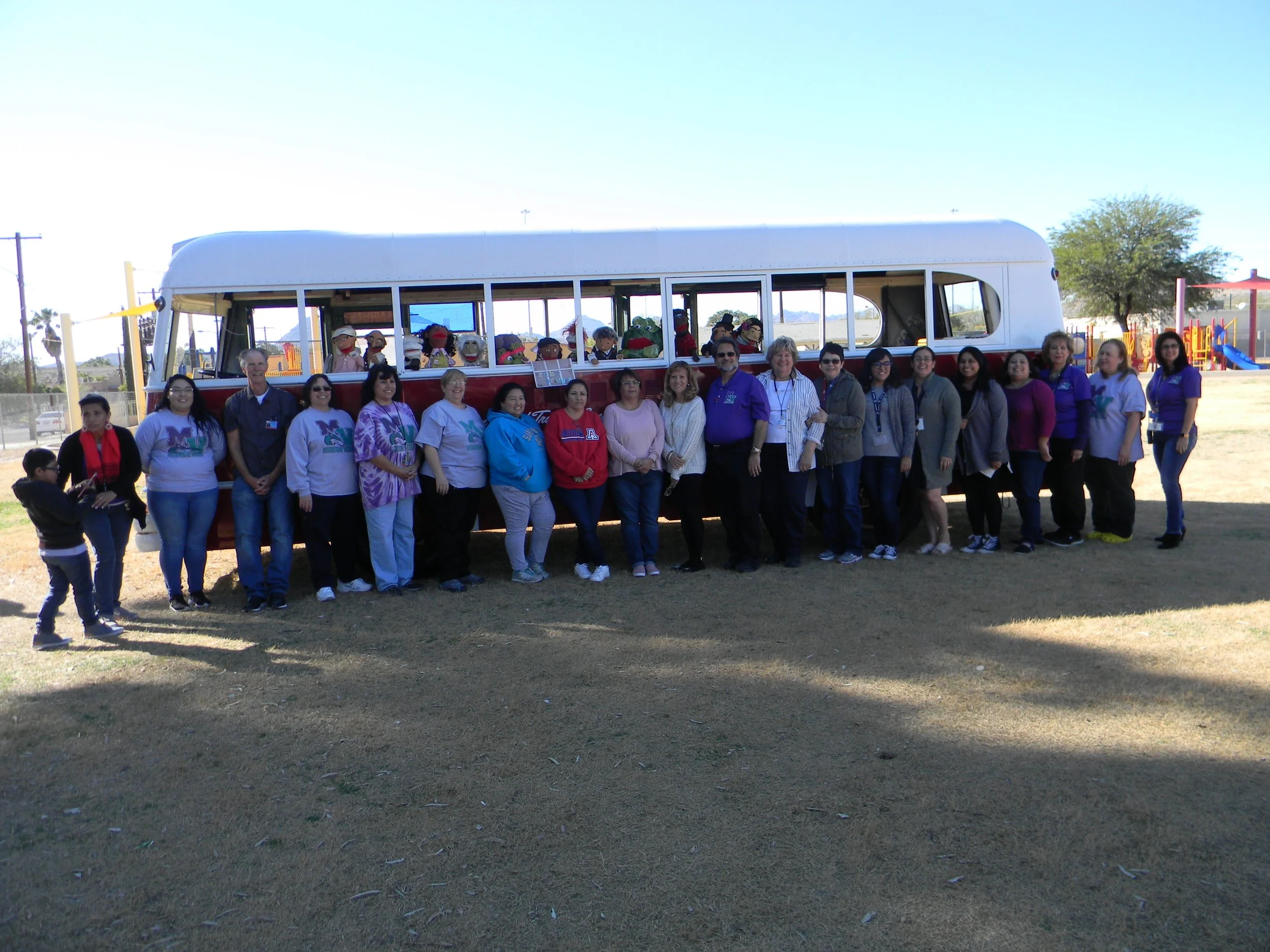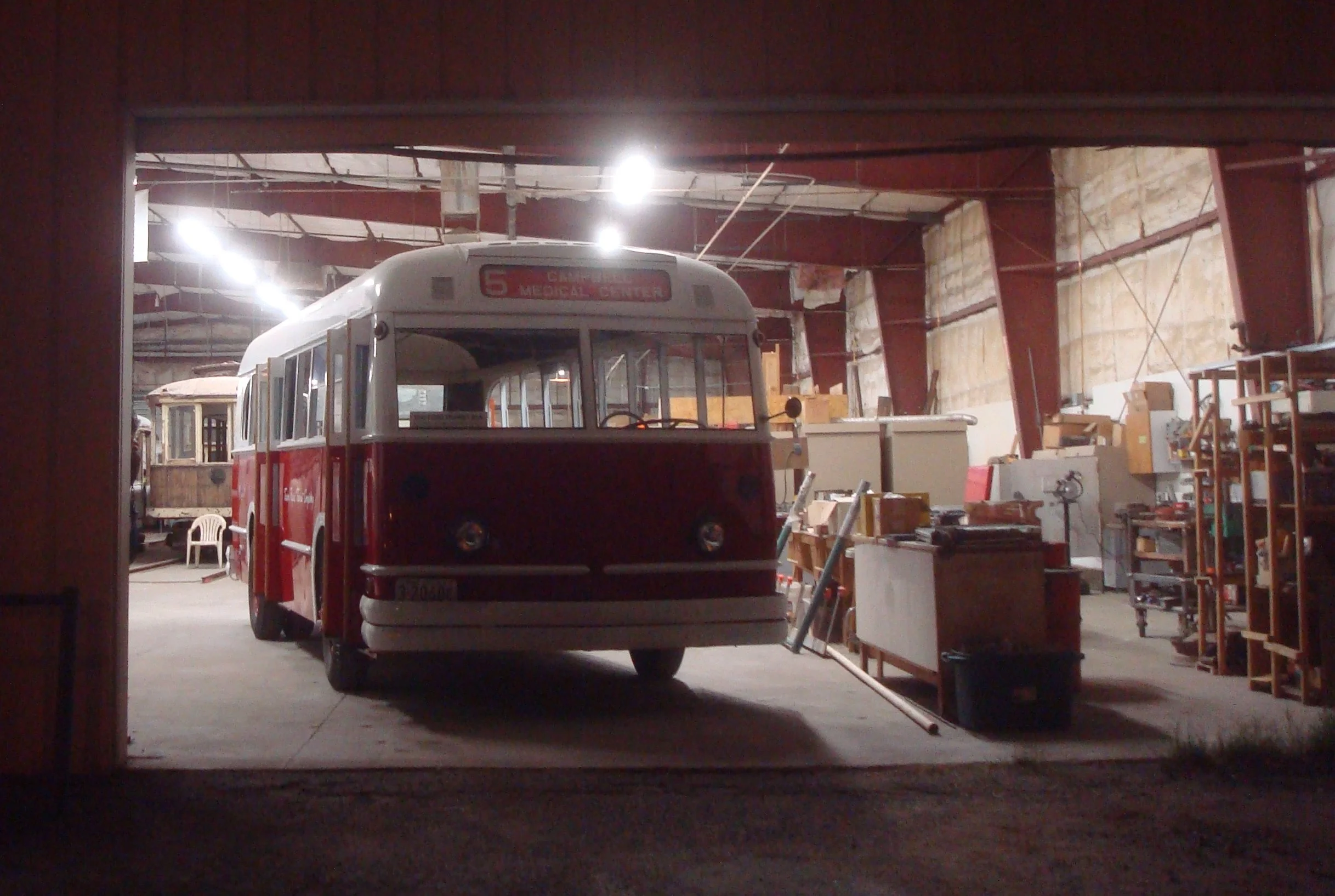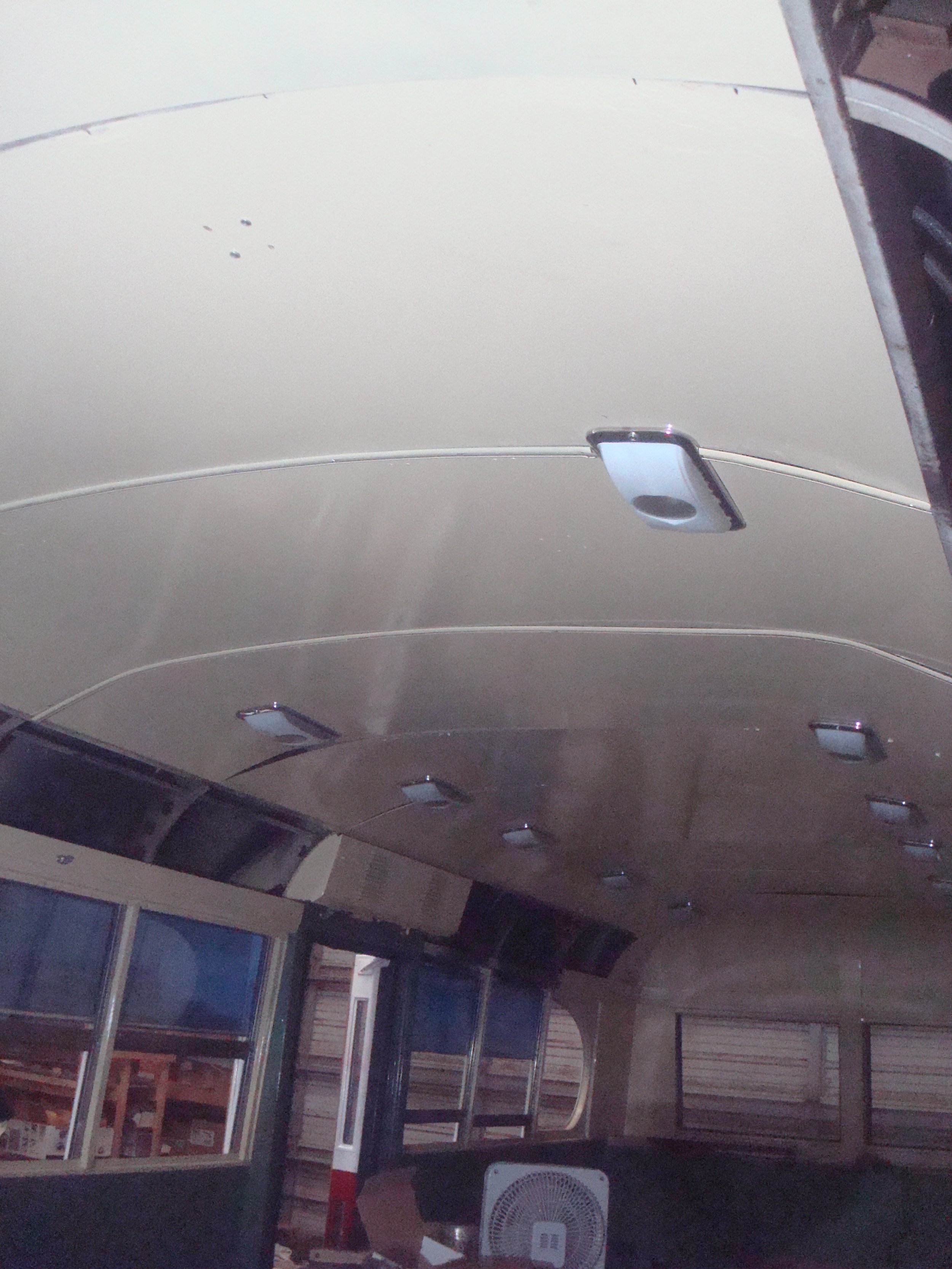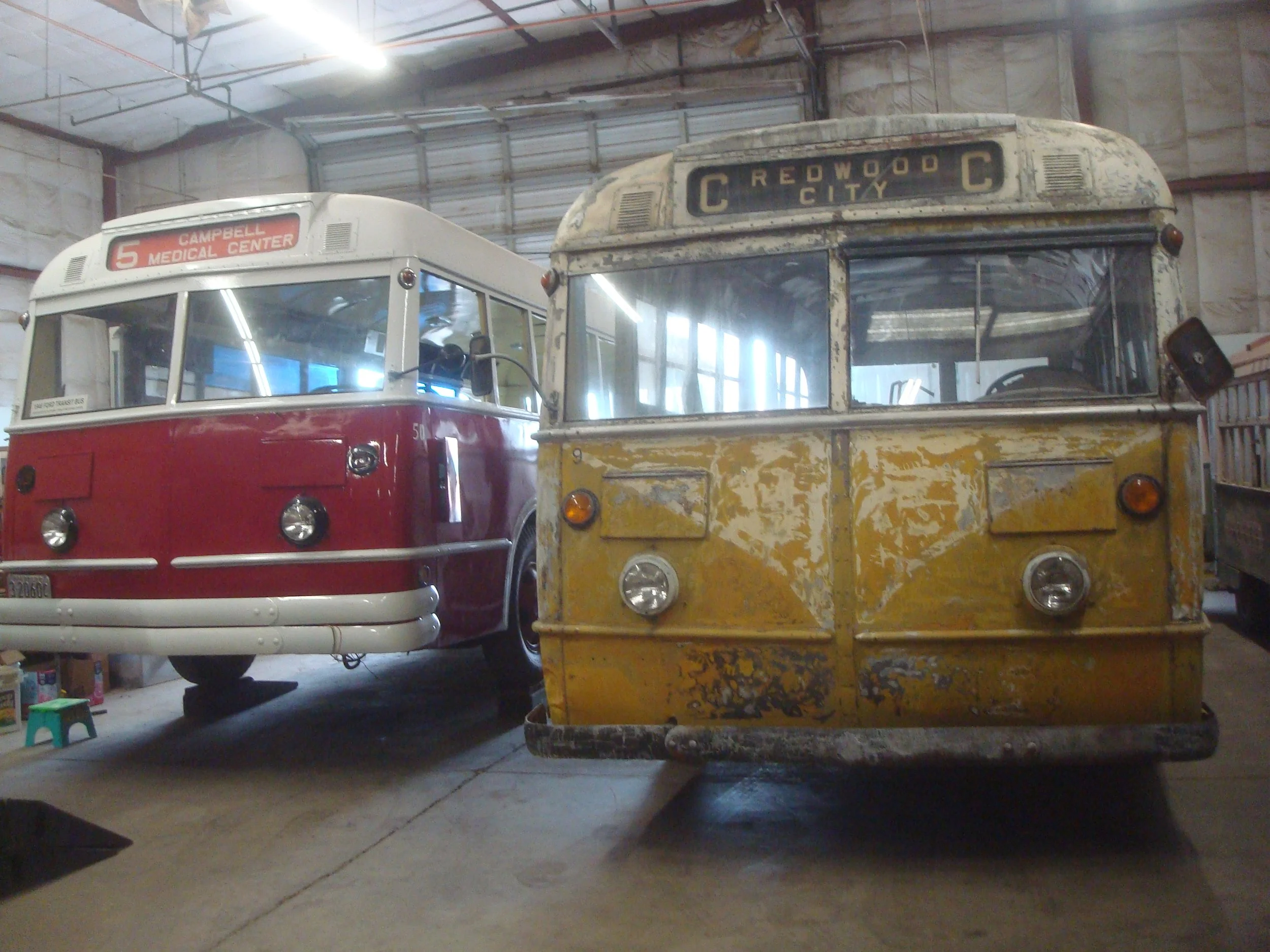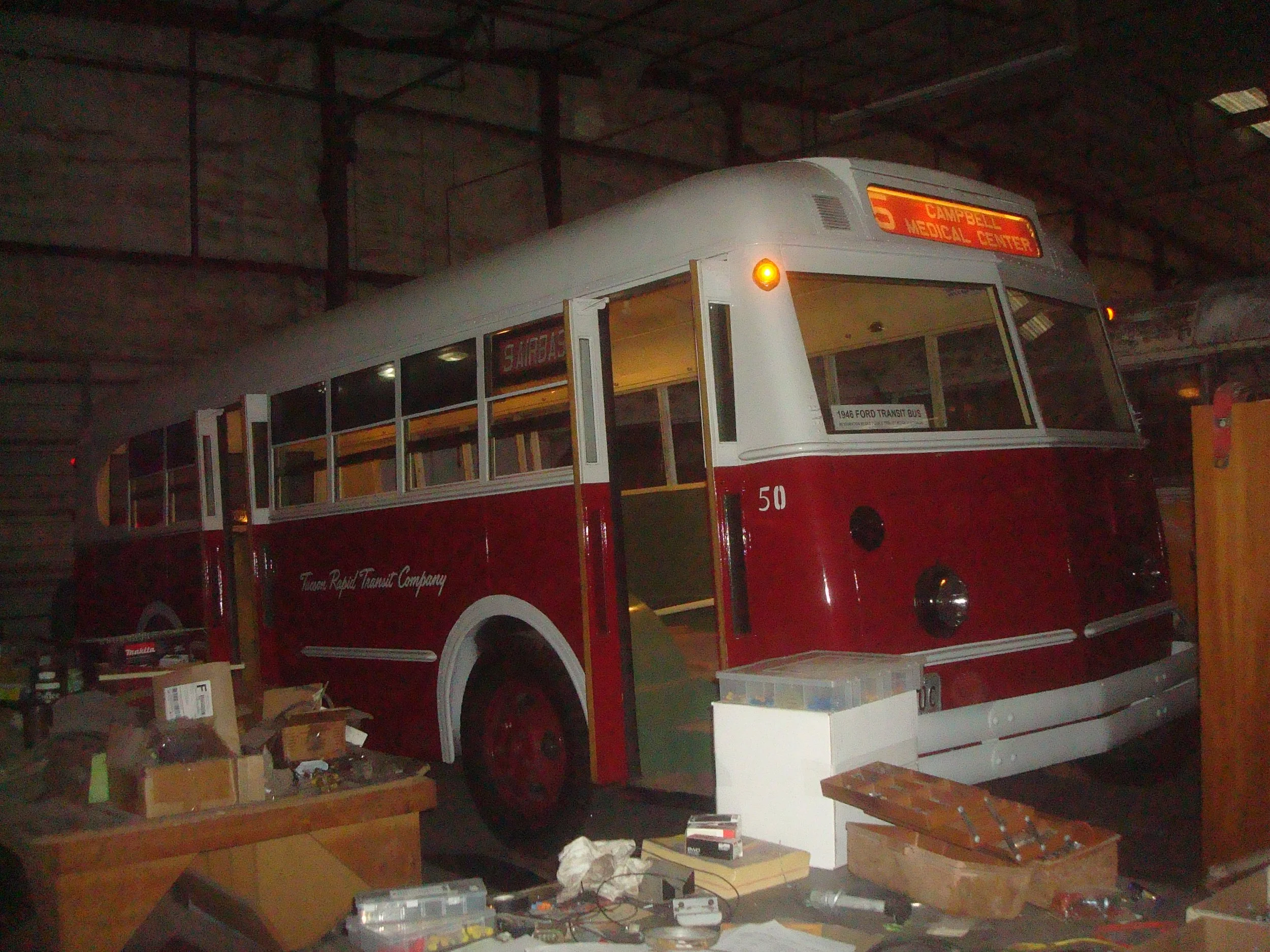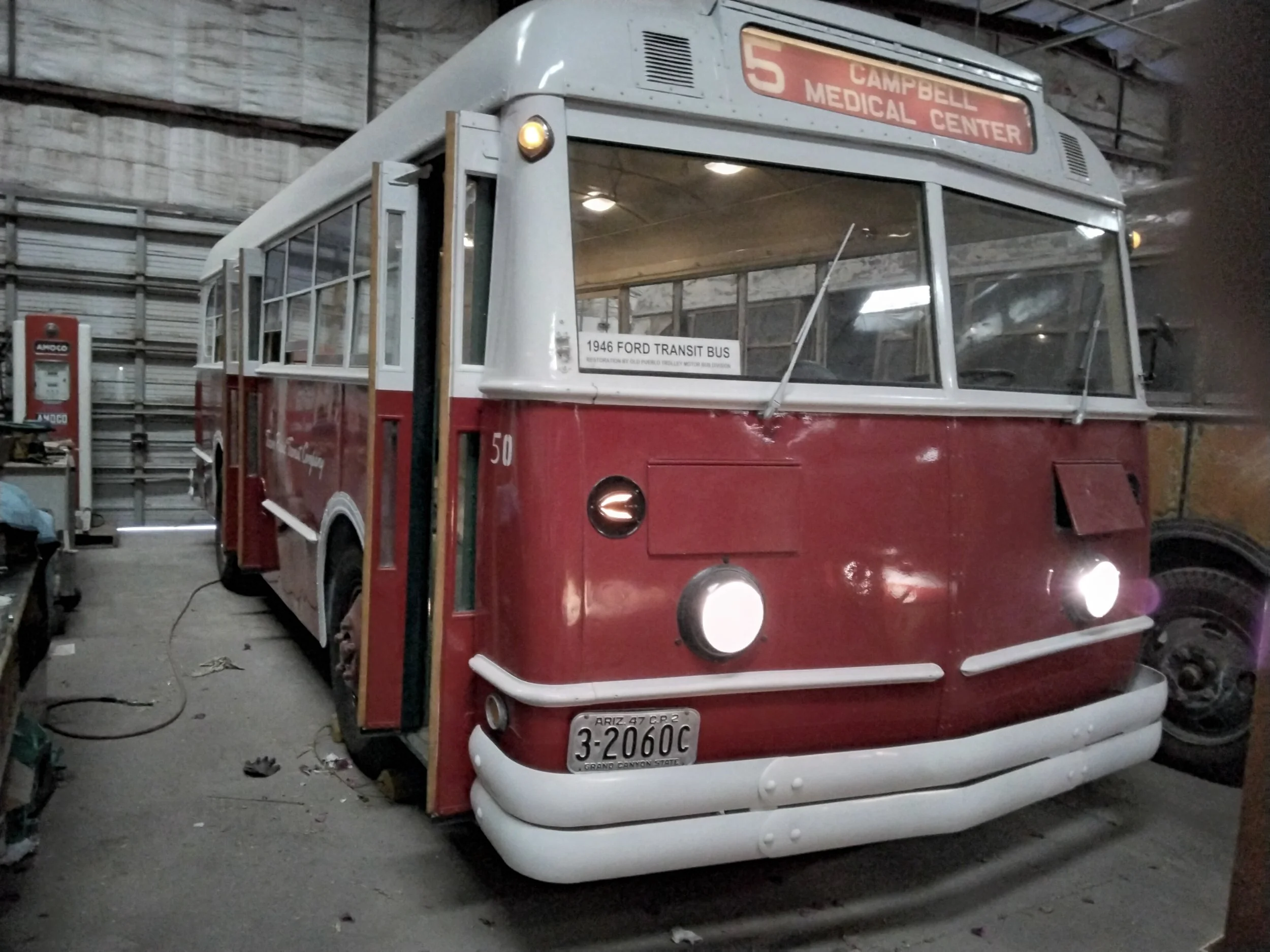Tucson Rapid Transit #50
TRT Driver C.S. “Tiny” Noel with #50 in its yellow and red paint scheme at Swan and Pima, 1950
Background
With America’s entry into World War II, almost every city experienced a sudden and major shift from private to public transportation due to nationwide fuel and tire rationing. Personal auto usage dropped dramatically, and bus ridership surged correspondingly. Most transit agencies were completely unprepared.
In Tucson’s case, this demand was compounded by new wartime industrial needs. Davis-Monthan Army Air Force Base became a training hub for new airmen, while Consolidated Vultee established a plant for building and modifying aircraft south of city limits. Tucson Rapid Transit, which only had around ten buses in service in 1941, was in desperate need of more.
The Ford Transit Bus was to the bus industry what the Model T Ford was to the automobile industry and the Birney Safety Car was to streetcar companies. It provided a fairly well constructed yet inexpensive product. With its small capacity of 27 passengers, it was designed for lightly patronized routes which might have been abandoned if such a bus were not available. At one time Fords were very common, with around 11,000 of them serving communities of all sizes. In short, this was the perfect answer for wartime shortages.
The Office of Defense Transportation authorized production of Ford Transit buses for the transportation of defense workers to their jobs. 47 of them eventually made their way to TRT and Occidental Bus Lines in Tucson by 1945, a 400% increase in rolling stock. Likewise, ridership numbers increased from 1.7 million annual riders in 1941 to 7 million in 1945. Even after the end of the war, ridership continued to grow for years afterward.
TRT #44 painted in a “War Bond Special” during World War II
Service History
TRT’s last order of Fords (#50-55) was delivered in January 1947. These were unique in that they had blue glass in the top row of windows, destination signs on the side, and a new red and white paint scheme symbolic of a change in ownership which occurred in October 1946. For much of its life, #50 was assigned to driver C. S. “Tiny” Noel on the Speedway-Pima route.
By 1954 all the Ford Transit buses except #50-55 had been retired in favor of larger and more powerful GM coaches. #50 was relegated to Sunday and holiday service until it was retired in 1955.
Post-Service History
#50 was sold to the Southern Arizona School for Boys who used it until the mid 1960s to transport their students.
Southern Arizona School for Boys logo on the side of #50 about 1960
At that time, Miller’s Saddle Shop, 28 E. Broadway Blvd., which repaired saddles, tack, boots and shoes, purchased #50. Mr. Miller removed the seats and hand rails and converted the bus into a mobile saddle repair shop, which he drove around Arizona to rodeos to repair the cowboys’ equipment on the spot.
Miller’s Saddle Shop mobile repair shop around 1962
When Mr. Miller’s health declined, the bus was sold about 1976 to Herman Doty, who ran the Old West Trading Post on South 12th Avenue. He used the bus to transport items to a swap meet in Nogales. On about the third trip, the engine blew. After the engine was removed, the bus was used for storage. In 1979 the bus was sold to Doty’s partners, Ken and Lillian Burrows, who moved the Old West Trading Post, and the bus, to a location on the Tucson-Ajo Highway about two miles east of Robles Junction. They continued to use it for storage until 1987 when the business was closed and the bus was sold to Les Webb on South Nogales Highway. Old Pueblo Trolley purchased the bus in March 1988 and stored it until 1995 when rehabilitation was begun.
#50 as it was found in 1988
Due to lack of sufficient funds and the press of other projects, rehabilitation has been very slow. Most funding to date has come in small amounts from two individuals, the Tucson-Pima County Historical Commission and the 20th Century Electric Railway Foundation. Initially OPT volunteers focused on body work, rehabilitating the air brakes and beginning rewiring. Rebuilding of an engine and refurbishment of the transmission was done courtesy of the Early Ford V-8 Club. Following installation by the club, OPT volunteers have rehabilitated and installed the air compressor, located and installed a radiator and had a muffler installed. On September 24, 2004, the bus ran under its own power for the first time in almost 30 years. Completion awaits additional volunteers and sufficient funding. It is hoped to be completed by 2026, 80 years since it was built.
#50 in our collection today
Restoration Status
#50 is about 95% completely restored but requires additional funding and volunteer work.
Remaining tasks:
Engine and transmission are operational, but need further tuning to address throttle and chronic overheating issues
Reinstall interior heating elements (cosmetic only)
Install and reupholster seats and remaining interior trim
Install blue glass windows (pending)
Ownership Snapshot
Original Owner: Tucson Rapid Transit #50
Acquired From: Les Webb in 1988
Current Livery: Tucson Rapid Transit #50
Technical Specs
Year Built: 1946
Manufacturer: Ford Motor Company, Highland Park Plant, Detroit, MI
Model: 69B
Serial: 1306420
Powertrain: Ford 239 cu in (3,920 cc) "flathead" V-8 with a 3-speed manual transmission
Body: Aluminum body on chassis
Length: 25 ft 9 in
Width: 96 in
Seating: 27 passengers, transit seating





